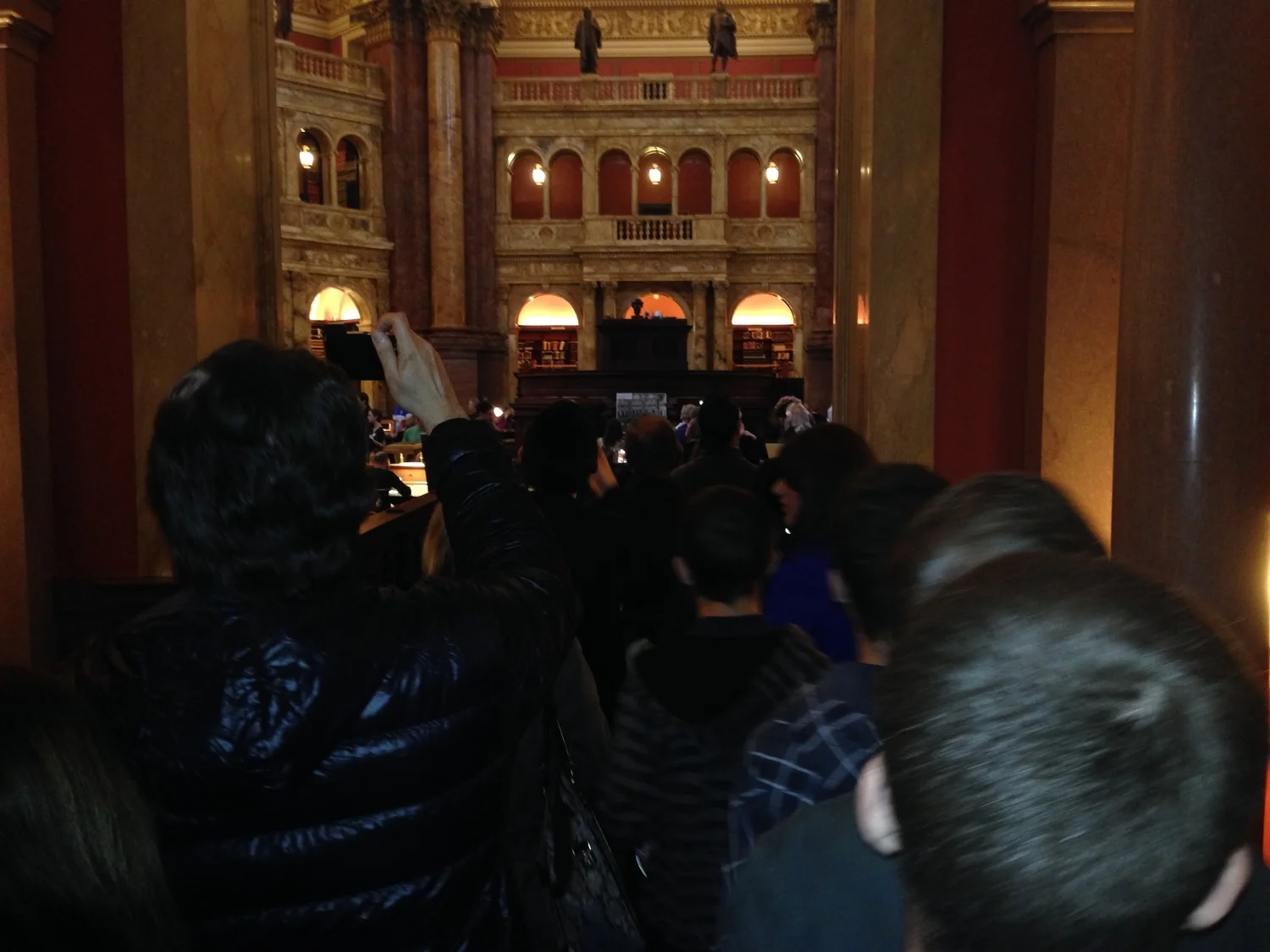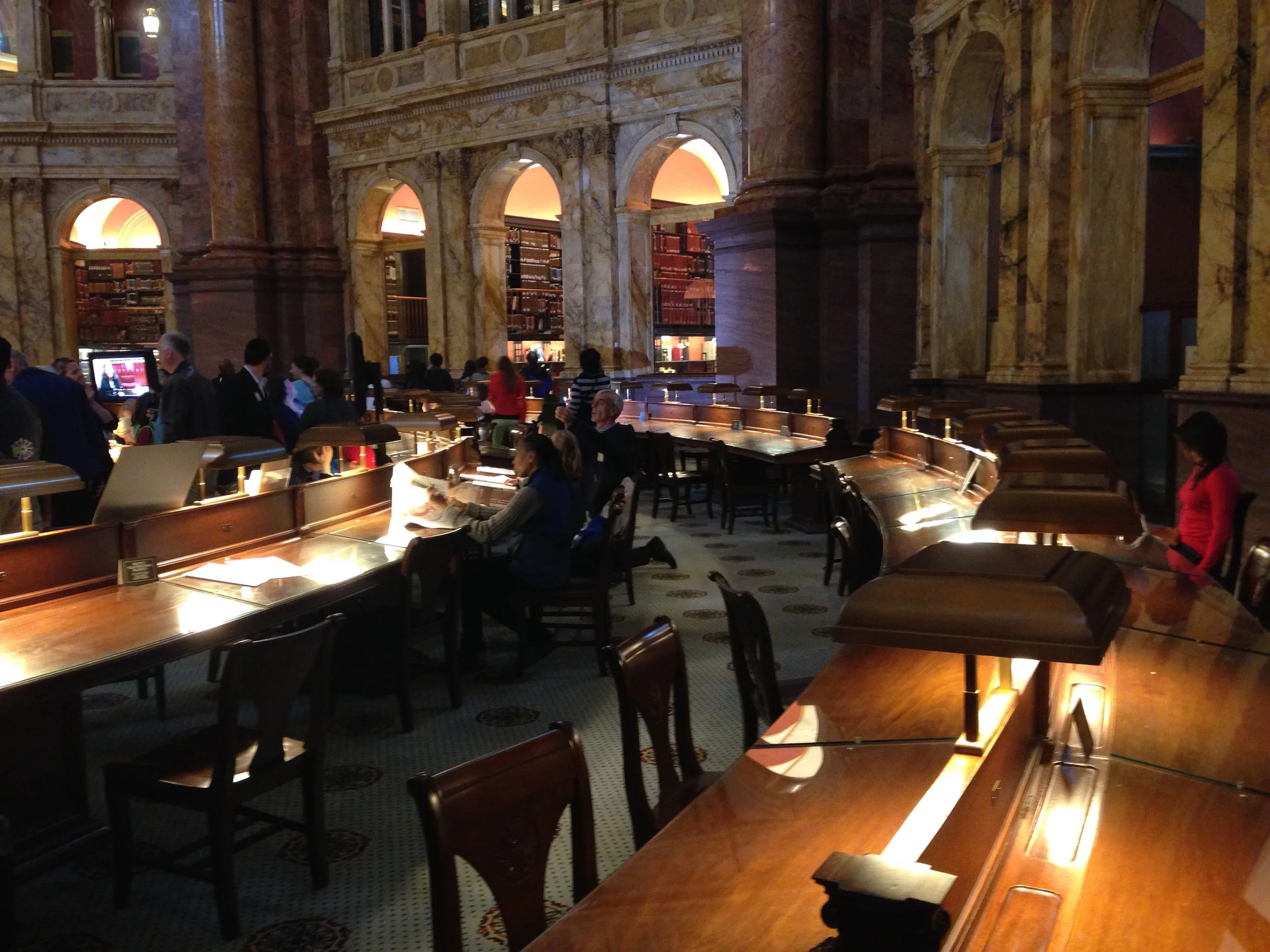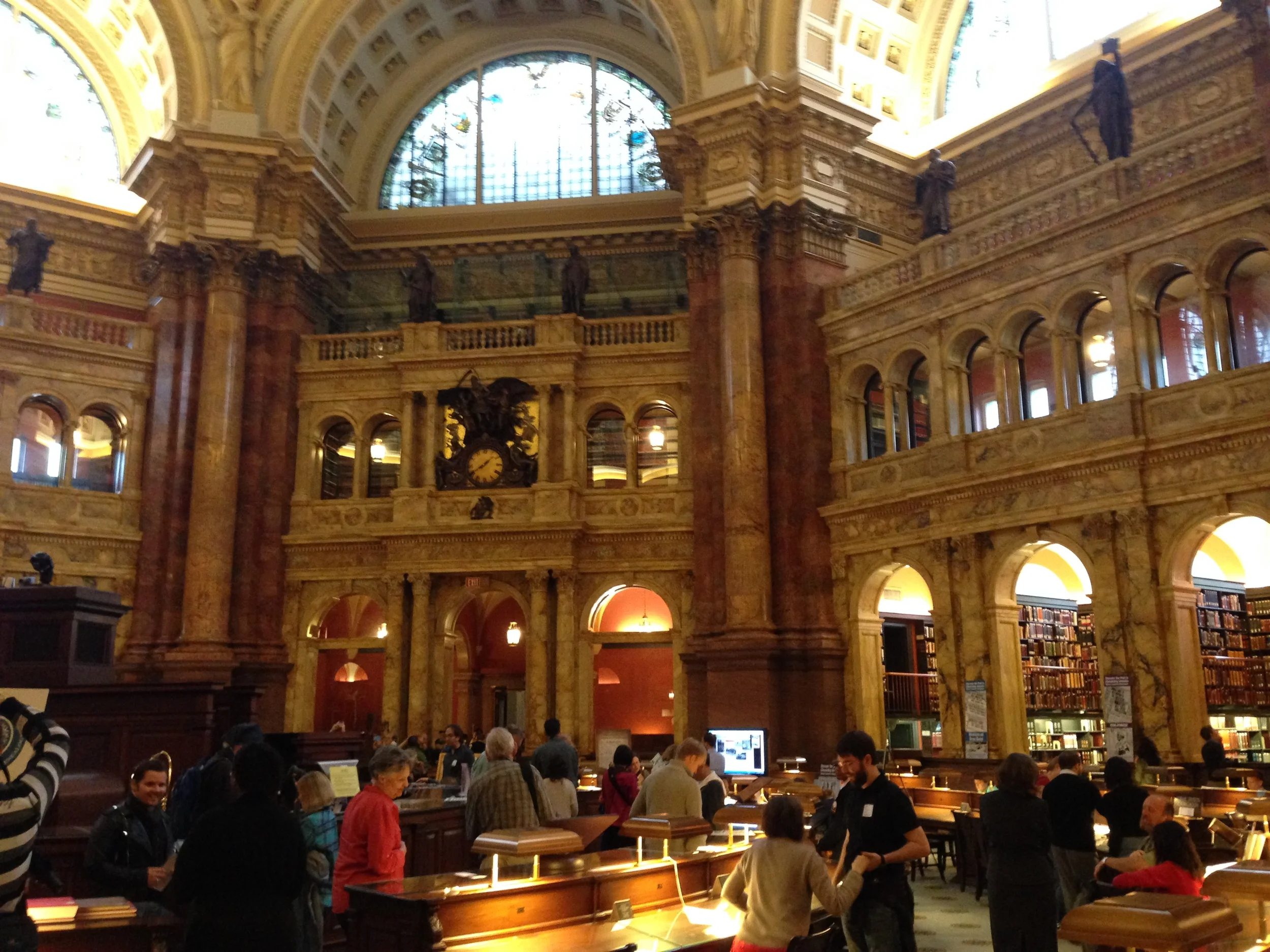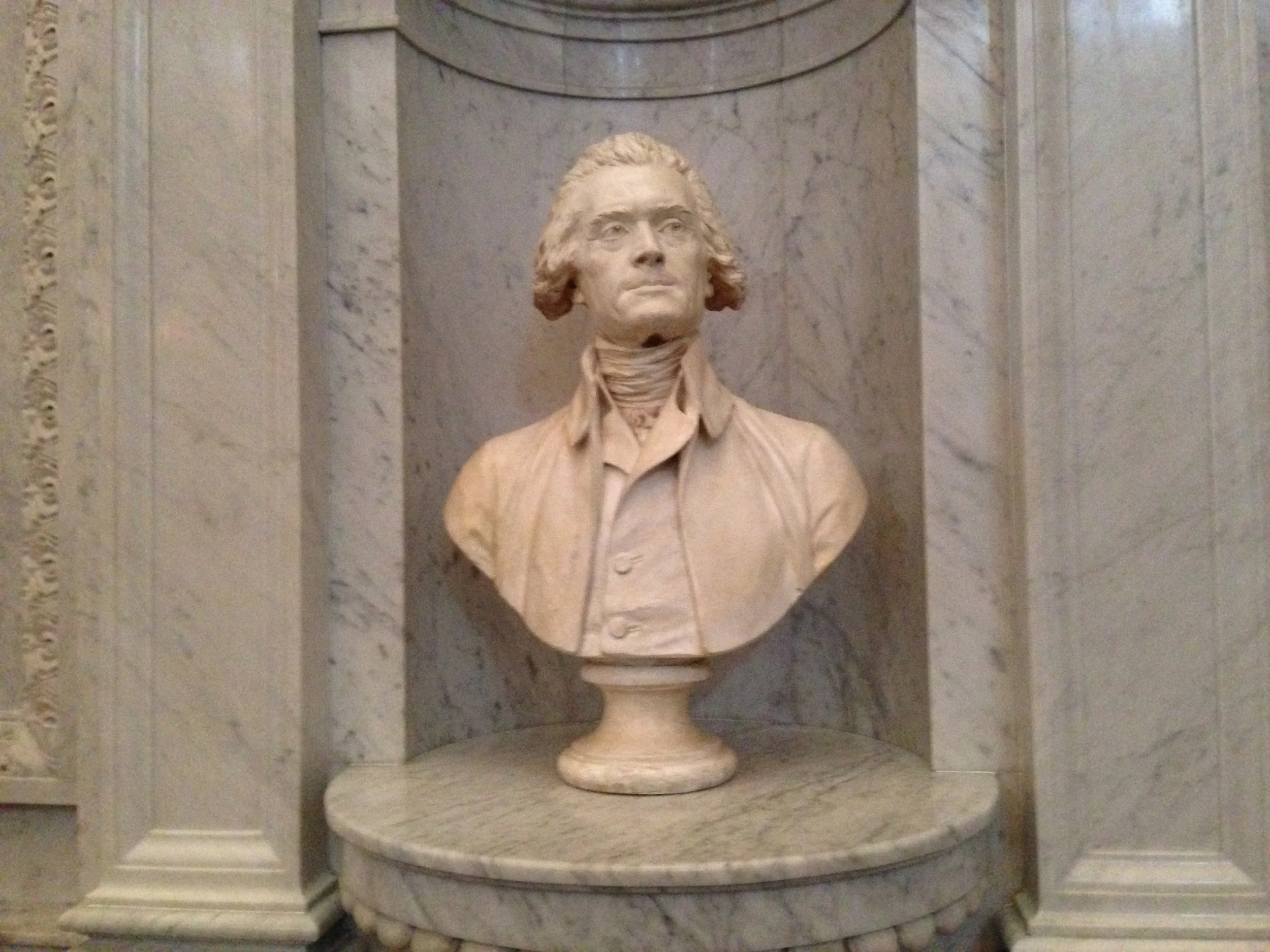At the Library of Congress
The Main Reading Room is the central chamber inside the Library of Congress’ Jefferson Building. It is the most beautiful study space in the world and 363 days out of the year it is closed off to the general public, accessible only to those who are conducting research. On Presidents Day and Columbus Day, however, the great unwashed are allowed to enter in and explore. Guess where I was yesterday afternoon.
For those among you who might not be familiar, the Library of Congress is the largest library in the world and our nation’s single greatest repository of knowledge. There are multiple buildings associated with the library but the Jefferson Building is, by far, the most iconic. Completed in 1897, it is a wonder of Beaux-Arts architecture, located directly beside the Supreme Court and across the street from the Capitol Building.
It was a gray and drizzly day in the nation’s capital. I parked behind the Folger Shakespeare Library and walked the two blocks to the entrance of the Library of Congress (there are a lot of books in this neighborhood), entering at ground level and making my way upstairs to the grand foyer before queuing up for the reading room. There was a bit of a wait, but nothing too daunting. As I shuffled toward the chamber, a library volunteer kept telling us, “This is a special day. The main reading room is only open like this twice a year and you can take all the photographs you want - with flash.” Goodie.
I’ve been to the Library of Congress a number of times and conducted research there. I’d even gotten to see the main reading room from the year-round viewing platform on the second story, but I’d never actually been inside the space. It’s the difference between watching a game on TV and actually being inside the stadium.
Upon entering, the first thing you’re struck by is the great domed ceiling overhead. The painting at the apex depicts a female figure (Human Understanding) lifting the veil of ignorance from man. She’s flanked by 12 seated figures which represent the 12 countries & eras which have contributed to the intellectual advancement of Western Society (Greece is philosophy, Spain discovery, England literature etc.).
After pulling your eyes down from the ceiling you look at the lamplit, researcher desks which ring the floor area. Their lights give the room’s cavernous interior a warm glow. In and amongst the desks, librarians were circulating about, explaining how visitors can access the library’s resources at any time and the process by which people come to the Library of Congress to conduct research. I grabbed a bookmark from one of them and continued to wander.
The books...oh the books. Neatly organized in every alcove and piled high all around you. The ones you can see in the reading room are just a minuscule fraction of the library's total holdings. You don't have to worry about getting up and searching for them yourself, however - that might take all day. The hunt is work for your trusty librarian. All you have to do is fill out a request card and hand it to them.
There’s lots of statuary in the reading room. Just below the dome are eight allegorical plaster figures supported by great marble columns. Each figure is symbolic of a specific virtue of Western thought: Religion, Commerce, History, Art, Philosophy, Poetry, Law and Science. Below and between these figures are 16 bronze statues of various historical personalities which exemplify these virtues; Michelangelo and Beethoven are associated with Art while Moses and Saint Paul are identified with Religion, etc.
Strangely absent were the bronze statues of Perry Mason and Ben Matlock as representative of Law, but I held my peace and moved on.
Before leaving I ducked inside the walk-in card catalog. Remember the card catalog in your school library growing up? This one has been bit by a radioactive spider and grown to abnormal size and strength. It’s massive - aisle after aisle of cubbies, all organized and stuffed with index cards pointing you to the address of various books and subject matters. It’s Valhalla for devotees of the dewey decimal system.
After exiting the catalog, I made my way out of the reading room, taking one last moment to admire the fabulous clock which hangs above the entryway. The Rotunda Clock, by John Flanagan, shows father time (scythe in hand) flanked by figures representing the four seasons of the year (as opposed to the Four Seasons from Jersey Boys who sing Let’s Hang On so wonderfully).
Before heading back to the car I poked around the gift shop, restrained myself from purchasing a book, and took a quick photo of my main man, T-Jeff. What a great way to spend your Columbus Day afternoon.










